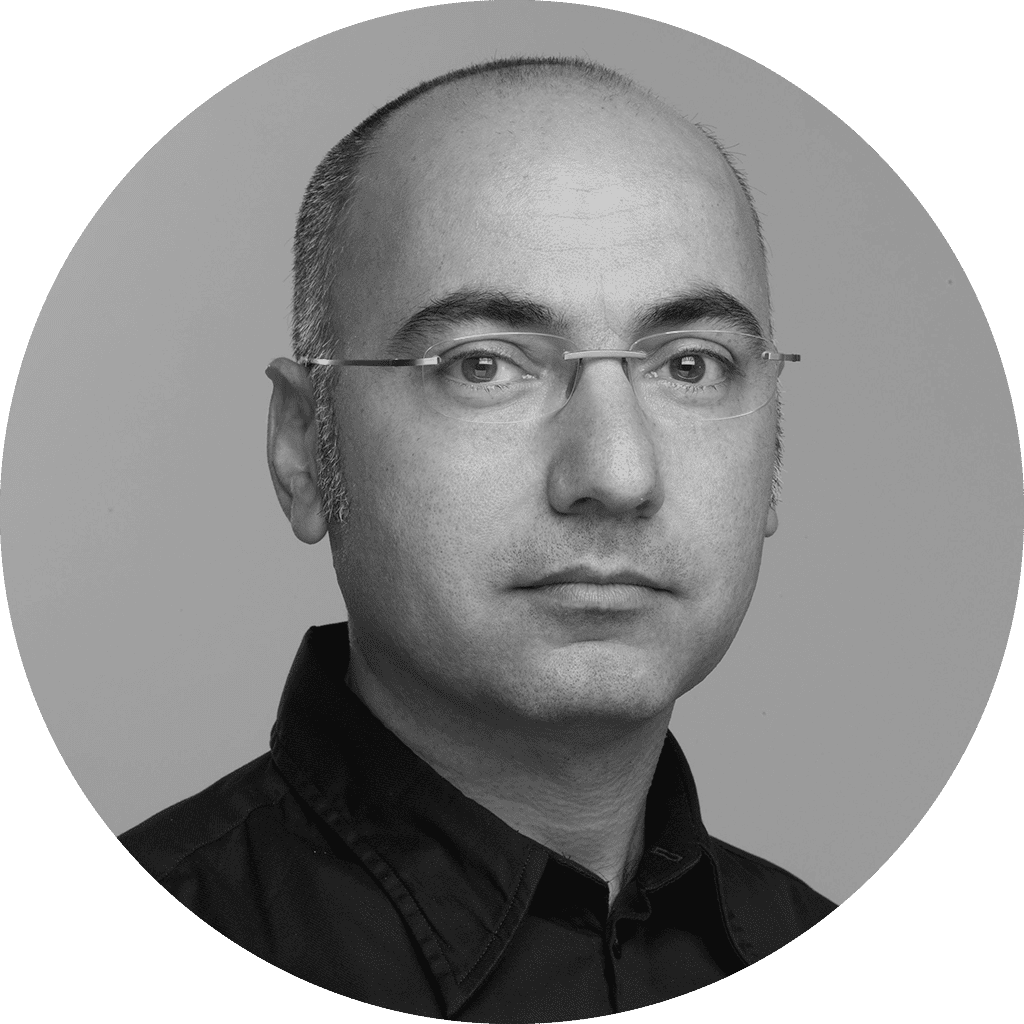
Iyad Alsaka joined OMA as a director in 2007 and became partner in 2011. Responsible for OMA’s work in the Middle East and Africa, Iyad has led projects including the acclaimed masterplan for Waterfront City in Dubai, the HAI Airport City masterplan in Doha, and Concrete in Alserkal Avenue, a new public venue for Dubai’s cultural district. Before joining OMA, Iyad was director of design and development at Dubai Holding where he was responsible for numerus of projects. Born in 1969 in Syria, Iyad holds a degree in Architectural Engineering from the University of Aleppo.
Q: Jane Jacobs once wrote that the essence of cities lies in the intricacy of sidewalk use. Dubai is today internationally renowned for its luxurious buildings and stunning landmarks, however not (yet) for its streets. While we are witnessing an increasing number of new projects with a focus on public realm and design quality, no satisfying model of street retrofitting has been tested yet. To what extent do you see flexibility in the current streets configurations to accommodate new design solutions?
IA: The Dubai urban fabric found in old Deirah and Bur Dubai, like Al Ras, Naif Souk, etc. provided the opportunity to create pedestrians life by two factors; the street canyons vs. the buildings heights and set-backs provided sufficient shading for people to walk in the shade, either on left or right of the road depending on the time of the day. And second the buildings ground floor are fully activated as retail, not only it engages pedestrian in the public realm, but also provides economic opportunities for live / work districts. Encouraging buildings owners and providing them with the right planning permissions to activate their ground floor and engage it with the existing public realm is very viable scenarios throughout the city.
Q: Many believe that Dubai is and will always be an air-conditioned city, where hot climate conditions will force people to move around only with cars, taxis and Uber, giving up sidewalk in favour of additional vehicle lanes. We know this is neither a sustainable growth model nor an accurate reading of the reality, however, the general planning practice is endorsing this belief. What are in your opinion the policies that should be put in place to invert this tendency?
IA: There are many possibilities to introduce and encourage pedestrian life in Dubai. One; The current Dubai metro network offers great coverage throughout the city, yet it falls short on providing sufficient parking spaces around each station to encourage commuters to use it for work or private. Each station should have a parking for commuters to park their cars. Two; building planning regulation to activate the ground floor with retail is a must and reconsidering the urban fabric vs. street canyons to be more suitable for such climate by creating shade, a successful model already exist in the old city. Three: reduce commuting by providing incentives for business and people to live / work in the same district or neighbourhoods. This is where walking and even cycling to work become very feasible. Four: using local trees for walkways as a norm in planning any new road corridors.
Q: Dubai has been growing at an incredibly steady pace in the last decades, coupled with a substantial lack of comprehensive long term planning documents. This increased the complexity in coordination among neighboring developments, which often feel disconnected among each other. What mechanism or planning policy do you believe should be put in place to stitch back different developments and provide adequate continuity to the urban fabric?
IA: It is very apparent that the hasty development that took place in late 90’s and early 2000, mainly lead by semi government developers, and in complete absence of the city as a regulatory body, lead to the current conditions of the public realm in the city and the disconnection between the various parts of Dubai. Yet I strongly think that planned organic transformation and regeneration can take place through time by commencing a framework and structure plan for the city and introducing social normality by cementing the existing and the future planned urban conditions. The framework should study the current proven city planning methods globally, Dubai as an international city, can absorb all kinds of scenarios collected from various global conditions, and incorporate sufficient resilience in the plan to grow and transform based on future trends and technologies.
